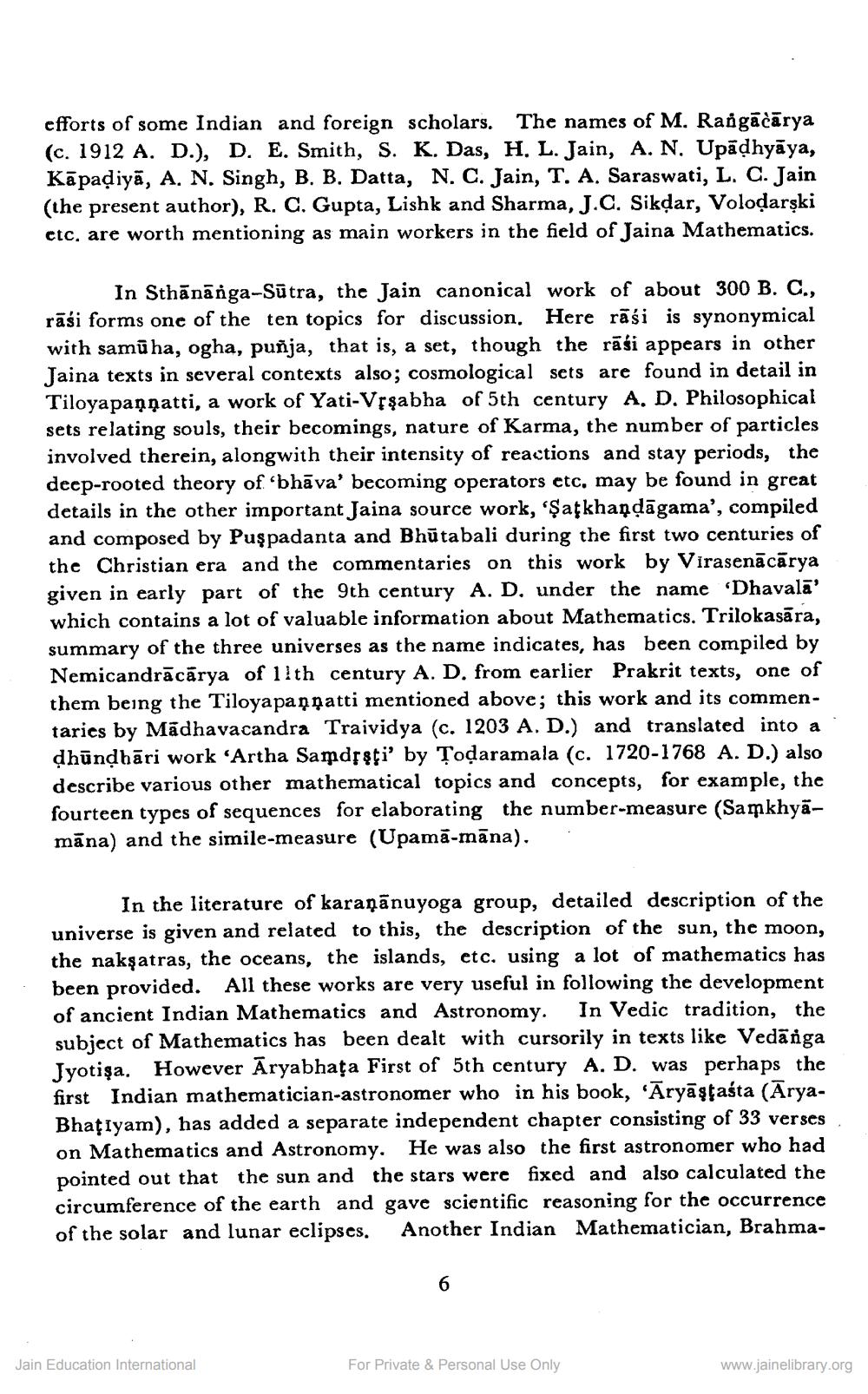Book Title: Astronomy and Cosmology Author(s): L C Jain Publisher: Rajasthan Prakrit Bharti Sansthan Jaipur View full book textPage 9
________________ efforts of some Indian and foreign scholars. The names of M. Raigācārya (c. 1912 A. D.), D. E. Smith, S. K. Das, H. L. Jain, A. N. Upāļhyāya, Kāpadiyā, A. N. Singh, B. B. Datta, N. C. Jain, T. A. Saraswati, L. C. Jain (the present author), R. C. Gupta, Lishk and Sharma, J.C. Sikdar, Voloďarski etc, are worth mentioning as main workers in the field of Jaina Mathematics. In Sthānānga-Sūtra, the Jain canonical work of about 300 B. C., rāśi forms one of the ten topics for discussion. Here rāśi is synonymical with samūha, ogha, puñja, that is, a set, though the rāśi appears in other Jaina texts in several contexts also; cosmological sets are found in detail in Tiloyapannatti, a work of Yati-Vfşabha of 5th century A, D, Philosophical sets relating souls, their becomings, nature of Karma, the number of particles involved therein, alongwith their intensity of reactions and stay periods, the deep-rooted theory of 'bhāva' becoming operators etc, may be found in great details in the other important Jaina source work, 'Satkhaņdāgama', compiled and composed by Puşpadanta and Bhūtabali during the first two centuries of the Christian era and the commentaries on this work by Virasenācārya given in early part of the 9th century A. D. under the name 'Dhavala' which contains a lot of valuable information about Mathematics. Trilokasāra, summary of the three universes as the name indicates, has been compiled by Nemicandrācārya of ilth century A. D. from earlier Prakrit texts, one of them being the Tiloyapannatti mentioned above; this work and its commentaries by Madhavacandra Traividya (c. 1203 A. D.) and translated into a dhūndhāri work 'Artha Samdjsti' by Todaramala (c. 1720-1768 A. D.) also describe various other mathematical topics and concepts, for example, the fourteen types of sequences for elaborating the number-measure (Samkhyāmāna) and the simile-measure (Upamā-māna). In the literature of karaṇānuyoga group, detailed description of the universe is given and related to this, the description of the sun, the moon, the nakşatras, the oceans, the islands, etc. using a lot of mathematics has been provided. All these works are very useful in following the development of ancient Indian Mathematics and Astronomy. In Vedic tradition, the subject of Mathematics has been dealt with cursorily in texts like Vedārga Jyotişa. However Aryabhata First of 5th century A. D. was perhaps the first Indian mathematician-astronomer who in his book, "Āryās Bhațiyam), has added a separate independent chapter consisting of 33 verses on Mathematics and Astronomy. He was also the first astronomer who had pointed out that the sun and the stars were fixed and also calculated the circumference of the earth and gave scientific reasoning for the occurrence of the solar and lunar eclipses. Another Indian Mathematician, Brahma Jain Education International For Private & Personal Use Only www.jainelibrary.orgPage Navigation
1 ... 7 8 9 10 11 12 13 14 15 16 17 18 19 20 21 22 23 24 25 26 27 28 29 30 31 32 33 34 35 36 37 38 39 40 41 42 43 44 45 46 47 48 49 50 51 52 53 54 55 56 57 58 59 60 61 62 63 64 65 66 67 68 69 70 71 72 73 74 75 76 77 78 79 80 81 82 83 84 85 86 87 88 89 90 91 92
